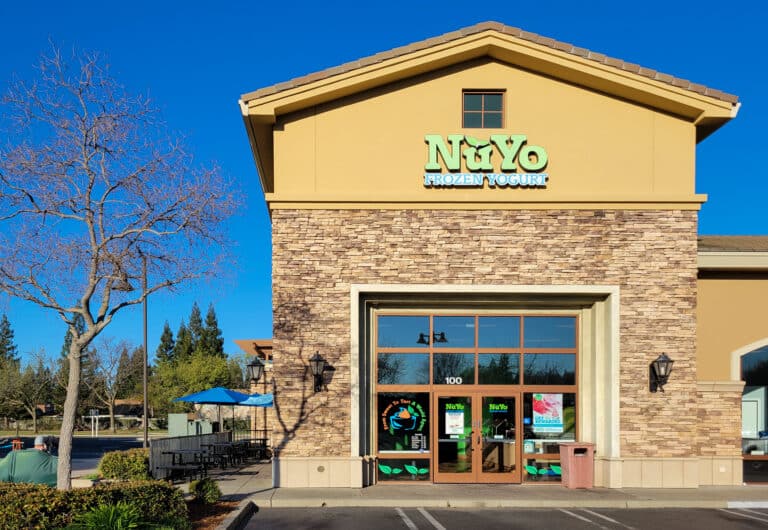Snappy Tomato Pizza Franchise FDD, Profits & Costs (2025)

Snappy Tomato Pizza was established in 1978 in Fort Mitchell, Kentucky, with its beginnings tied to a fortunate wager on a horse named “Snappy Tomato.” The winnings from that bet financed the very first restaurant.
Today, the brand is based in Burlington, Kentucky, and has expanded to more than 45 locations throughout Ohio, Kentucky, Indiana, Tennessee, and New Mexico.
Franchising opportunities started in 1981, giving entrepreneurs the ability to join a distinctive and growing pizza chain.
The brand has built its reputation on fresh, made-from-scratch dough, a proprietary award-winning sauce, and its famous 24-slice “Beast” pizza. Beyond pizzas, the menu features calzones, hoagies, wings, salads, and desserts, making it appealing to a broad customer base.
Initial Investment
How much does it cost to start a Snappy Tomato Pizza franchise? It costs on average between $121,000 – $350,000 to start a Snappy Tomato Pizza franchised restaurant.
This includes expenses for construction, equipment, inventory, and the funds needed to cover initial operating costs. The total investment will vary depending on several factors, such as the type of Snappy Tomato Pizza restaurant, the market location, and whether the franchisee decides to lease or purchase the property.
| Type of Expenditure | Amount |
|---|---|
| Application Fee | $1,000 |
| Initial Franchise Fee | $25,000 |
| Real Estate | $1,500 – $4,000 |
| Equipment, Fixtures, Leasehold Improvements and Decorating Costs | $65,000 – $250,000 |
| Initial Supplies and Inventory | $4,500 – $8,000 |
| Training | $2,500 – $5,000 |
| Security Deposits, Prepaid Expenses and Working Capital | $10,000 – $30,000 |
| Miscellaneous Costs | $500 – $1,000 |
| Additional Funds | $1,500 – $2,000 |
| Initial Marketing (Grand Opening) | $10,000 – $25,000 |
| Total | $120,500 – $350,000 |
Snappy Tomato Pizza Franchise Disclosure Document
Frequently Asked Questions
How many Snappy Tomato Pizza locations are there?
As of the latest available data, Snappy Tomato Pizza operates a total of 45 locations across Ohio, Kentucky, Indiana, Tennessee, and New Mexico. Of these, 44 restaurants are franchise-owned while just 1 location is company-owned.
What is the total investment required to open a Snappy Tomato Pizza franchise?
The total investment required to open a Snappy Tomato Pizza franchise ranges from $121,000 to $350,000.
What are the ongoing fees for a Snappy Tomato Pizza franchise?
Franchisees of Snappy Tomato Pizza are required to pay a royalty fee of 5% on their gross sales. In addition, they must contribute a marketing or advertising fee, which typically ranges between 2.5% and 4%.
What are the financial requirements to become a Snappy Tomato Pizza franchisee?
To qualify as a Snappy Tomato Pizza franchisee, an applicant must have a minimum net worth of $250,000. In addition, they are required to have liquid capital of between $20,000 and $30,000 readily available to cover initial expenses and support the startup phase of the business.
Who owns Snappy Tomato Pizza?
The Snappy Tomato Pizza franchise is owned by The Deters Company, which acquired the brand in 2022 and continues to operate and expand the chain from its headquarters in Burlington, Kentucky.
Disclaimer
Disclaimer: This content has been made for informational and educational purposes only. SharpSheets is an independent educational resource and is not affiliated with, endorsed by, or representing any franchisor mentioned on this website. Where noted, figures are taken from the franchisor’s Franchise Disclosure Document (FDD). In some cases, we may provide independent calculations or estimates based on publicly available information. We do not make any representation or warranties with respect to the accuracy, applicability, fitness, or completeness of the information presented in the article. You should not construe any such information or other material as legal, tax, investment, financial, or other professional advice. Nothing contained in this article constitutes a solicitation, recommendation, endorsement, advertisement, or offer to buy or sell any franchises, securities, or other financial instruments in this or in any other jurisdiction in which such solicitation or offer would be unlawful under the franchise and/or securities laws of such jurisdiction.
All content in this article is information of a general nature and does not address the detailed circumstances of any particular individual or entity. Nothing in the article constitutes professional and/or financial and/or legal advice, nor does any information in the article constitute a comprehensive or complete statement of the matters discussed or the law relating thereto. You alone assume the sole responsibility of evaluating the merits and risks associated with the use of any information or other content in this article before making any decisions based on such information or other content.




